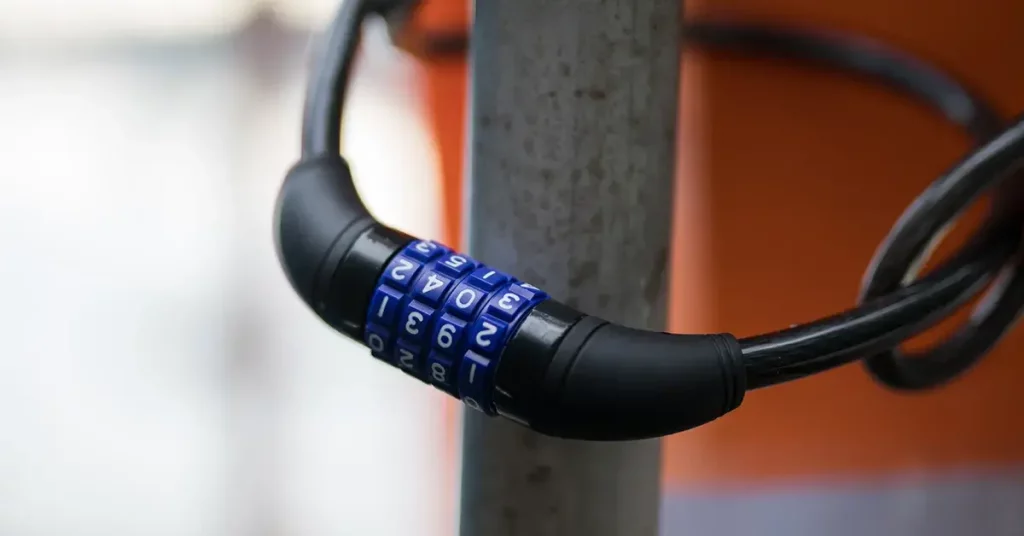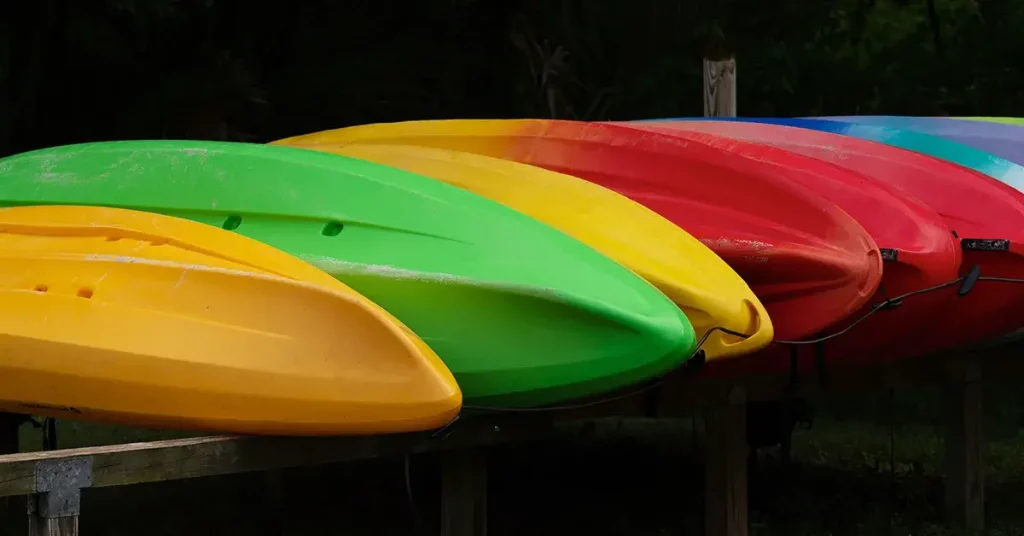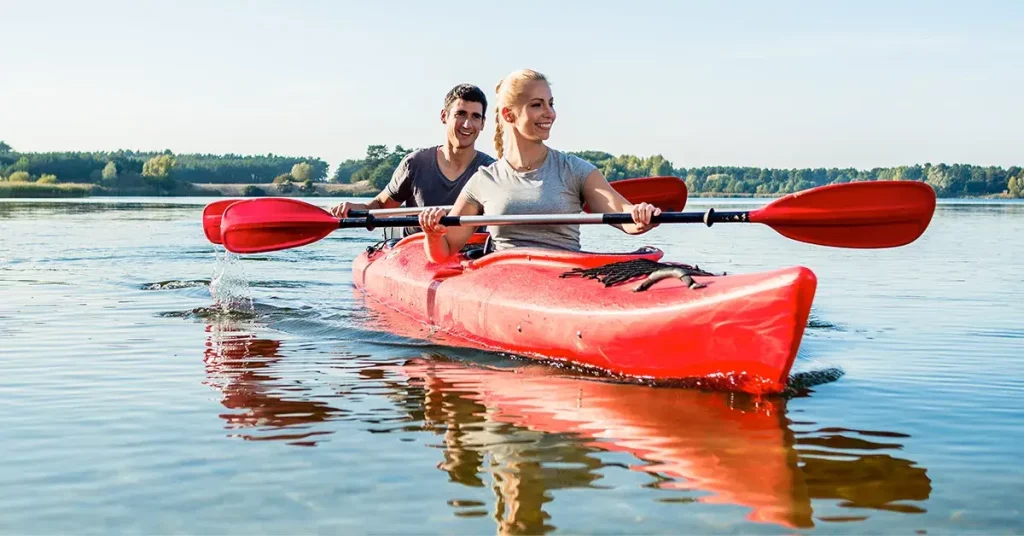There’s nothing worse than spending your hard-earned cash on a new kayak – only to fall victim to an unscrupulous thief. Kayaks – like mountain bikes, skis, and other high-end outdoor gear – are high on the list of commonly stolen items. Thieves can net a pretty penny from these items, so you’ll want to lock up your kayak whenever possible.
Properly locking up your kayak will go a long way to prevent this from happening to you. Most thieves go after easy targets of opportunity – and won’t bother with kayaks that are locked up.
Whether you’re storing your kayak indoors, outdoors, or taking it with you on a trip, there are several methods to lock up your kayak effectively. I’ll break these methods down in-detail – so you’ll have peace of mind knowing your craft is well secured.
How To Lock A Kayak Indoors?

The most secure method of storing your kayak is indoors. Whether inside a garage, basement, shed, or even inside your bedroom, keeping it indoors means it’ll be out of sight and secure.
Not everyone has the room to spare to keep a full-length kayak indoors, but there are several mounting methods that can help you take advantage of spare space. A hoist mounts to the roof of your garage and lets you store a kayak or canoe suspended above your vehicle.
There are also wall mounts you can attach to the inside or outside or a garage, which can be secured using a cable lock looped through a sturdy section of the kayak.
How To Lock A Kayak Outdoors?
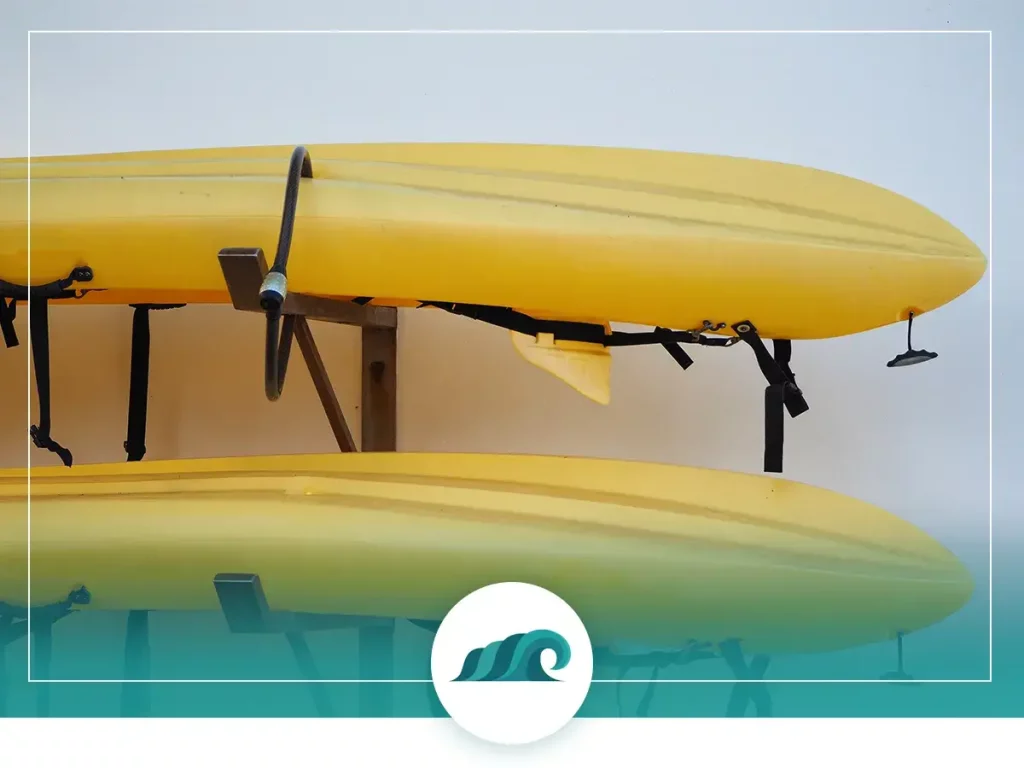
Not everyone has the space to spare to lock their kayak up indoors, which means outdoor storage is the only option for many kayakers. Luckily, locking up your kayak outdoors is fairly straightforward.
Check out this video for a hands-on lock at locking your kayak outdoors:
Some form or external wall mount or freestanding kayak mount will keep your kayak off the ground, saving you space and making your craft easier to lock up. A simple cable lock looped through a scupper hole and attached to the mount works well to secure your kayak(s).
Preventing thieves from spotting your kayak in the first place is another key to preventing theft. Whenever possible, locate your mount where it’s not easy to spot from a distance. Underneath a deck or awning can work well for this.
Next, you’ll want to use some form of cover to shield your craft from prying eyes. An old, beat-up tarp works well for this – as it makes it look like nothing of value is underneath.
Other Methods
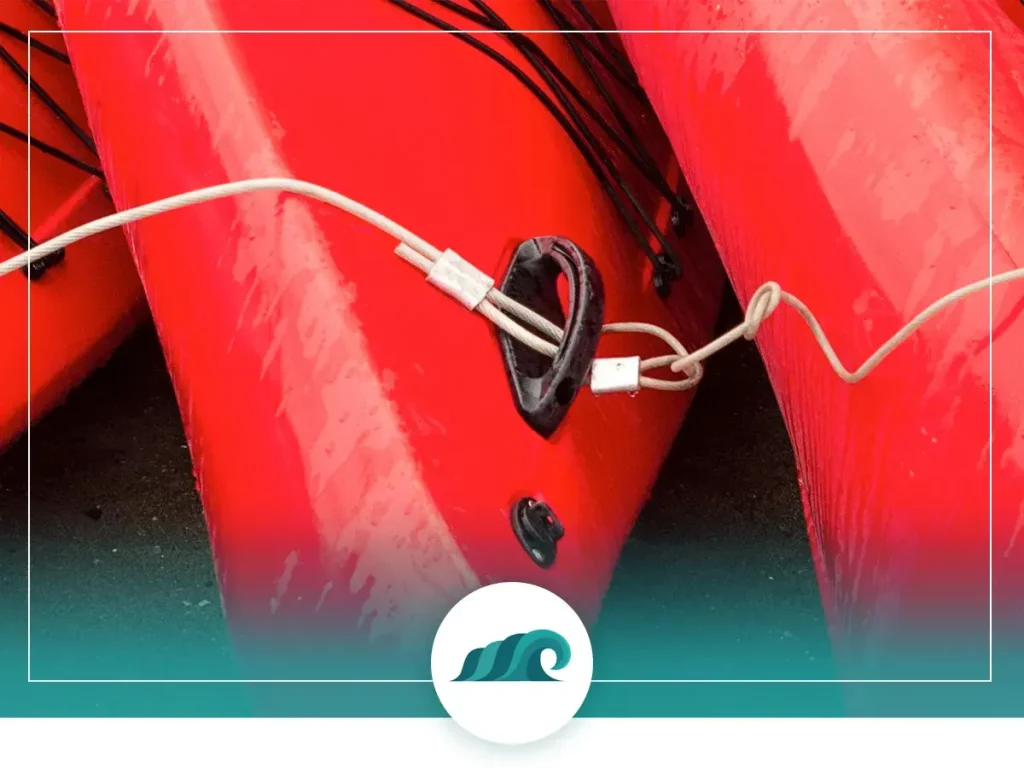
If you’re taking your kayak along with you on a fishing or camping trip, you’ll want a way to secure it wherever you go. A cable lock threaded through a scupper hole and wrapped around a dock, tree, or other sturdy structure works well for this.
Most sit-on-top and fishing kayaks have scupper holes that work well for threading a cable lock through. Pedal drive kayaks like Hobbies typically have a drive well hole that has plenty of room to run a cable through.
If your kayak doesn’t have scupper holes or a drive well, as is the case for many sit-inside kayaks, then you’ll have to look for another mounting solution. Some sit-inside kayaks have a removable hatch that can be used to thread a cable through and then out the cockpit. Some also have small holes located where the seat and coaming meet that work for attaching a cable lock.
If your kayak doesn’t have any of these, there are still viable methods of locking your craft. You can attach a sliding car ‘club’ lock across the cockpit and then thread a cable lock around it. This won’t stop a highly determined thief but should work to deter most casual smash-and-grab thieves.
How To Lock A Kayak To A Roof Rack or Trailer?
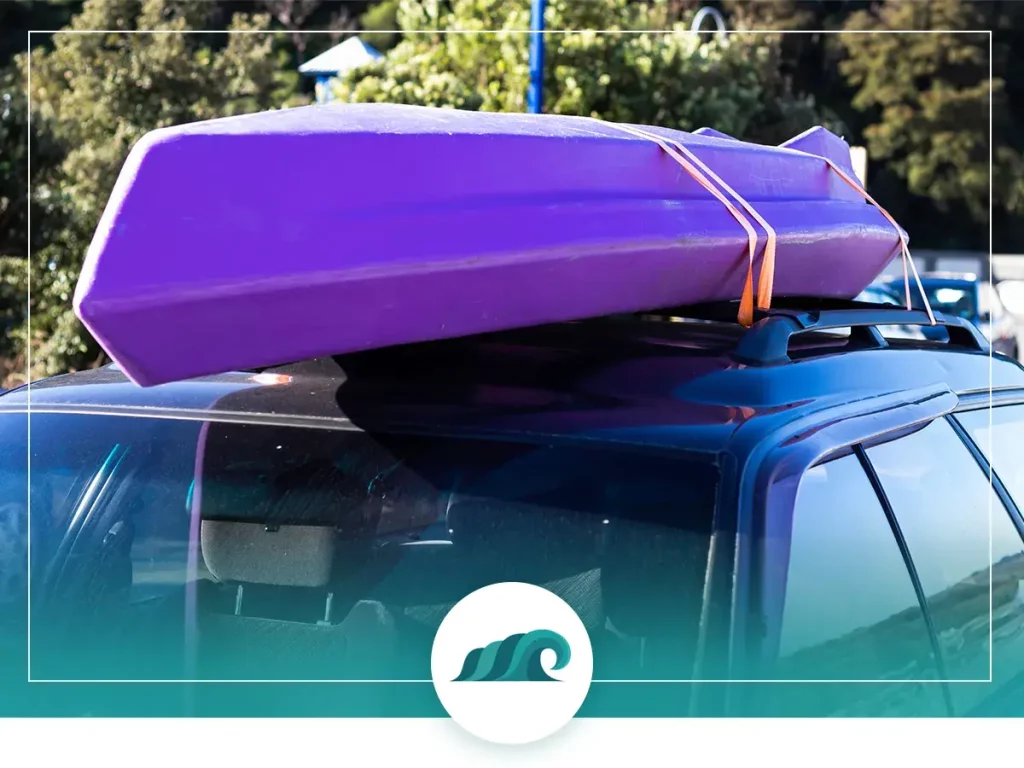
Hitting the road with your kayak means you’ll need to be cautious about securing it to your vehicle. This is especially true when you’re taking longer trips or traveling through high-crime areas.
There are several different options for locking your kayak to a roof rack or trailer, including cable locks and steel core locking straps. Some cable locks are designed specifically for locking kayaks to roof racks – without the need for scupper holes or other mounting surfaces.
Check out the Lasso Kong Cable Kayak Lock for a well-made kayak roof rack lock. It wraps around your craft and under the slots on the roof rack to create a rock-solid lock. This design makes it great for sit-in, sit-on-top, as well as fishing kayaks.
Steel core locking straps are another highly secure locking method. These straps feature steel cables inside nylon sleeves that will ward off all but the most determined thieves. Thule makes an excellent pair of steel core locking staps – you can check them out here.
When you’re on the road with your craft, there a few things you can do to further prevent theft. Activate your car’s alarm, and whenever possible park your vehicle as close to your sleeping location as possible. If it’s a hotel or motel, then park in a well-lit area as close to the lobby entrance as possible.
Other Precautions
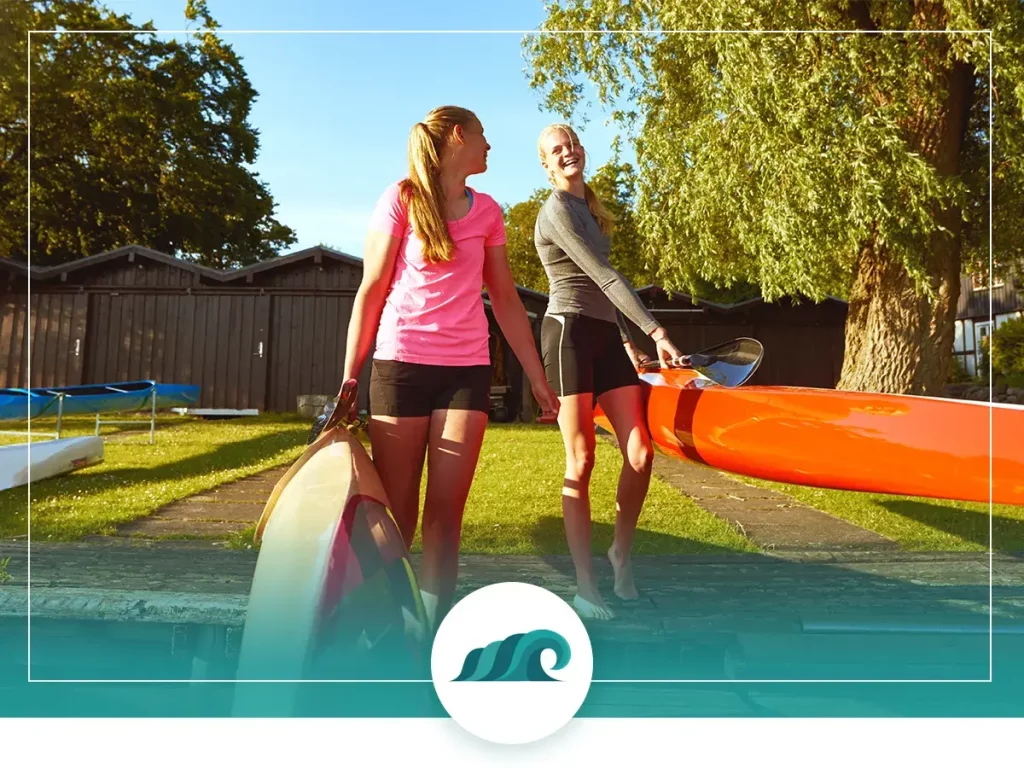
In addition to a good lock, there are several other steps you can take to prevent theft.
Remove Accessories
Whenever you lock up your kayak, take your kayak paddles, life jackets, and other accessories with you. These are easy targets for theft, so you’ll want to lock them up with the rest of your gear.
Record Your Kayak’s Serial Number
Make sure to write down your kayak’s serial number (hull identification number) in a secure location separate from your vessel. This won’t deter thieves but can help you recover your kayak if it’s stolen.
The serial number is typically located on the right side of the stern about 8 to 18 inches from the end. Serial numbers are 12-digits long and uniquely identify your vessel.
Some thieves might try to destroy or alter the serial number, so another step you can take is inscribing your name and info in a non-descript location.
Insurance
If you have an active homeowner’s insurance, you’re likely already insured for kayaks and other small craft up to $1000 – $1500. This usually covers property losses from theft. Make sure to check with your particular policy details to confirm.
If your kayak is worth more than the standard limit, then you may want to insure them separately. Check with your insurance agent if you want to purchase additional coverage.
Other Tips
The key to preventing thieves from sneaking off with your precious kayak is deterrence. If a professional safe-cracker wants to steal your kayak there’s not much you’ll be able to do to stop them.
Luckily, most thefts are committed by amateur opportunists.
This means a good quality lock along with a few safety precautions will be more than enough to deter them. Make it difficult for them to pull off and they’ll move on to easier prey.
Even something as simple as an empty can placed inside your kayak hatch can make enough noise to make stealing your kayak a pain.

